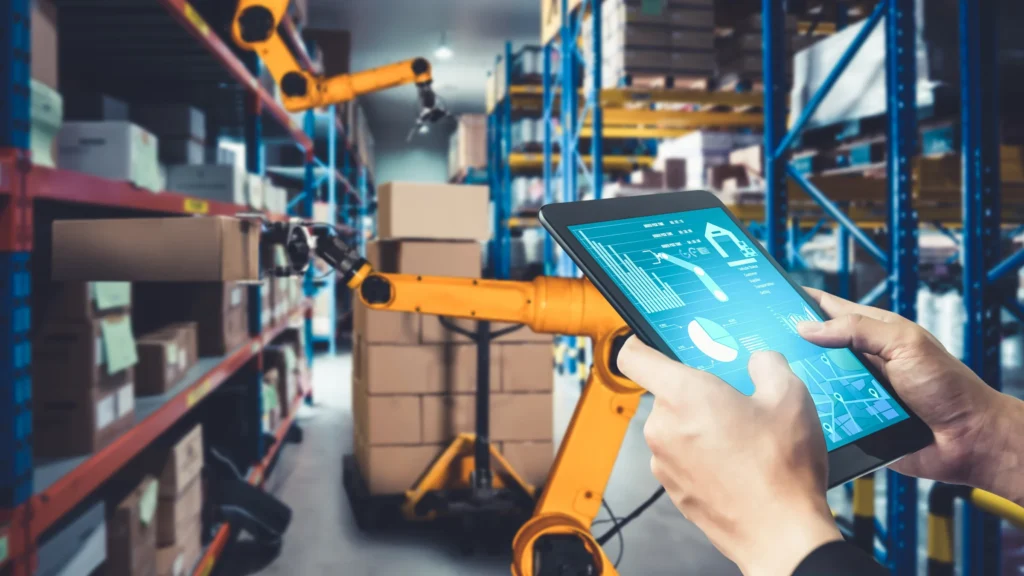The rapid growth of e-commerce and global supply chains has increased the demand for efficient, automated warehouse solutions. Traditional robotic automation is often limited by local computing power, high costs, and lack of flexibility. However, cloud robotics—which integrates robotic automation with cloud computing—is transforming warehouse operations by enabling real-time data processing, centralized control, and AI-driven optimization.
How Cloud Robotics Enhances Warehouse Automation
1. Real-Time Data Processing and Decision-Making
- Cloud-connected robots can process and share data instantly, allowing warehouses to dynamically adjust workflows.
- AI and machine learning models in the cloud enable faster decision-making for inventory management and order fulfillment.
- Robots can learn from collective experiences, improving performance without requiring on-site reprogramming.
2. Scalability and Cost Efficiency
- Cloud robotics reduces the need for expensive on-premise hardware, making automation more accessible to warehouses of all sizes.
- Companies can scale robotic operations on demand, adapting to peak shopping seasons or fluctuating inventory levels.
- Centralized cloud platforms minimize downtime and maintenance costs, enhancing overall efficiency.
3. AI-Driven Optimization of Warehouse Operations
- Cloud robotics utilizes predictive analytics to optimize inventory storage, retrieval, and order processing.
- Machine learning algorithms improve path planning, reducing congestion and maximizing robot efficiency.
- AI-powered demand forecasting allows warehouses to adjust stock levels proactively, preventing overstocking or shortages.
4. Remote Monitoring and Fleet Management
- Managers can oversee robotic operations remotely using cloud-based dashboards and IoT-enabled devices.
- Cloud platforms provide real-time alerts for system failures or inefficiencies, allowing rapid intervention.
- Multi-warehouse synchronization enables centralized control of robotic fleets across different locations.
5. Human-Robot Collaboration and Safety Enhancements
- Cloud-based AI allows robots to adapt to human workers, ensuring seamless collaboration in hybrid warehouses.
- Advanced computer vision and sensor integration reduce the risk of workplace accidents.
- Robots can assist in heavy lifting, sorting, and packaging, minimizing physical strain on human employees.
Key Applications of Cloud Robotics in Warehouses
1. Autonomous Mobile Robots (AMRs) for Smart Navigation
- AMRs utilize cloud-based AI to dynamically adjust routes, avoiding obstacles and optimizing pick-and-place operations.
- Companies like Amazon (Kiva robots) and GreyOrange deploy AMRs for efficient goods-to-person workflows.
- These robots reduce human travel time, improving warehouse throughput by up to 50%.
2. AI-Powered Robotic Arms for Sorting and Packaging
- Cloud-enabled robotic arms leverage machine learning to identify, pick, and sort items accurately.
- They integrate with computer vision systems for real-time defect detection and quality control.
- Smart packaging robots can customize box sizes and optimize packing density, reducing shipping costs.
3. Predictive Maintenance with IoT and Cloud Analytics
- Sensors on warehouse robots send real-time performance data to cloud-based analytics platforms.
- AI detects potential mechanical failures before breakdowns occur, reducing downtime.
- Cloud-based predictive maintenance lowers repair costs and extends robot lifespan.
4. Cloud-Based Digital Twins for Warehouse Simulation
- Digital twin technology creates virtual warehouse models in the cloud for real-time simulation.
- Managers can test layout changes, robot deployment strategies, and inventory management techniques without disrupting operations.
- AI-driven simulations help optimize warehouse layouts, reducing bottlenecks and inefficiencies.
Challenges and Considerations in Cloud Robotics Adoption
1. Data Security and Cybersecurity Risks
- Cloud robotics relies on constant data exchange, making systems vulnerable to cyberattacks and data breaches.
- Strong encryption, access control, and cybersecurity protocols are essential for protecting sensitive warehouse data.
2. Latency and Network Dependency
- Cloud robotics requires high-speed, low-latency internet to function effectively.
- Poor connectivity can cause delays in decision-making, affecting warehouse performance.
- Solutions like edge computing and 5G integration help reduce latency issues.
3. High Initial Investment for Integration
- While cloud robotics lowers long-term costs, initial setup expenses for software, hardware, and cloud infrastructure can be significant.
- Small and mid-sized warehouses may require gradual adoption strategies to balance investment and ROI.
4. Workforce Adaptation and Training
- Employees must be trained to operate, manage, and collaborate with AI-driven robotic systems.
- Resistance to automation can be mitigated through upskilling programs and hybrid work models.
The integration of AI, 5G, IoT, and blockchain will further enhance cloud robotics, making warehouses fully autonomous and self-optimizing. Future advancements will see interconnected robotic ecosystems, allowing seamless robot-to-robot collaboration across supply chains. As cloud robotics continues to evolve, it will redefine efficiency, speed, and cost-effectiveness in modern warehouse automation.


